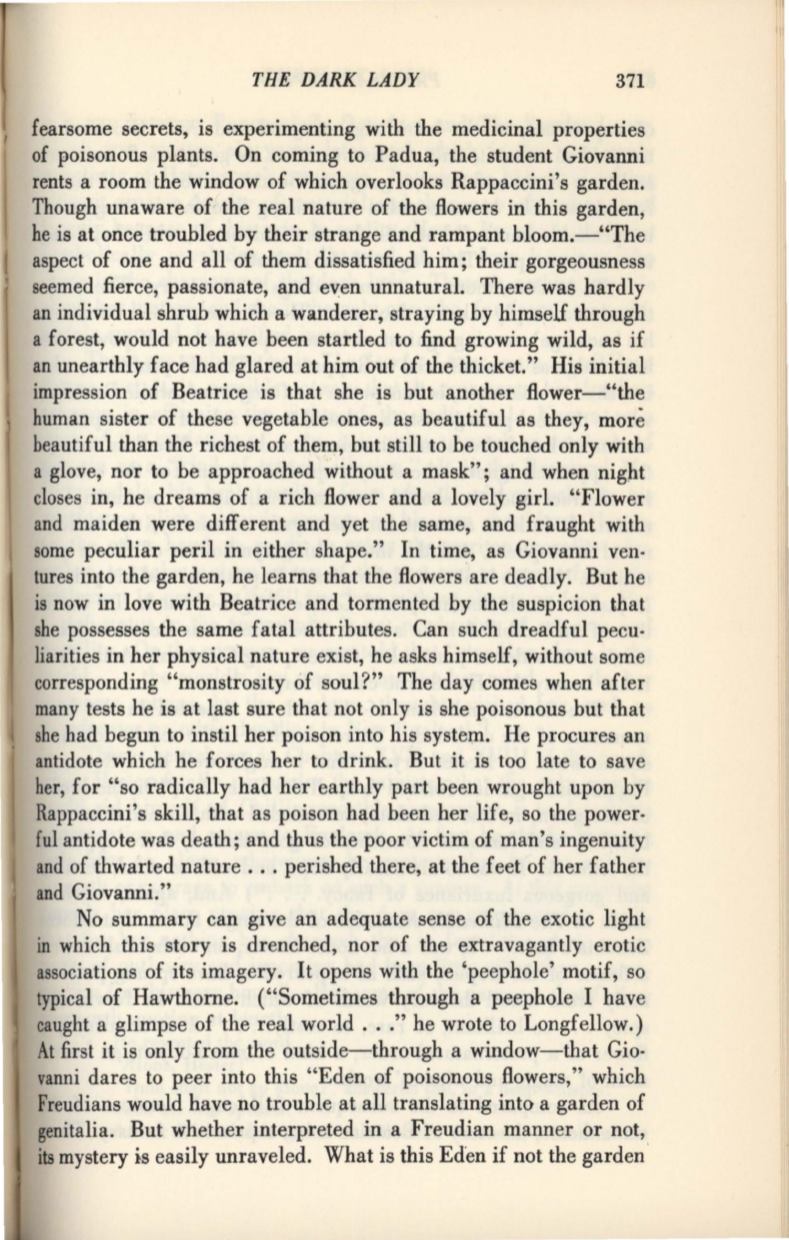
THE DARK LADY
371
fearsome secrets, is experimenting with the medicinal properties
of poisonous plants. On coming to Padua, the student Giovanni
rents a room the window of which overlooks Rappaccini's garden.
Though unaware of the real nature of the flowers in this garden,
he is at once troubled by their strange and rampant bloom.-"The
aspect of one and all of them dissatisfied him; their gorgeousness
seemed fierce, passionate, and even unnatural. There was hardly
an individual shrub which a wanderer, straying by himself through
a forest, would not have been startled to find growing wild, as if
an unearthly face had glared at him out of the thicket." His initial
impression of Beatrice is that she is but another flower-"the
human sister of these vegetable ones, as beautiful as they, more
beautiful than the richest of them, but still to be touched only with
a glove, nor to be approached without a mask"; and when night
closes in, he dreams of a rich flower and a lovely girl. "Flower
and maiden were different and yet the same, and fraught with
some peculiar peril in either shape." In time, as Giovanni ven–
tures into the garden, he learns that the flowers are deadly. But he
is now in love with Beatrice and tormented by the suspicion that
she possesses the same fatal attributes. Can such dreadful pecu–
liarities in her physical nature exist, he asks himself, without some
corresponding "monstrosity of soul?" The day comes when after
many tests he is at last sure that not only is she poisonous but that
she had begun to instil her poison into his system. He procures an
antidote which he forces her to drink. But it is too late to save
her, for "so radically had her earthly part been wrought upon by
Rappaccini's skill, that as poison had been her life, so the power–
ful antidote was death; and thus the poor victim of man's ingenuity
and of thwarted nature ... perished there, at the feet of her father
and Giovanni."
No summary can give an adequate sense of the exotic light
in
which this story is drenched, nor of the extravagantly erotic
associations of its imagery. It opens with the 'peephole' motif, so
typical of Hawthorne. ("Sometimes through a peephole I have
caught a glimpse of the real world ..."he wrote to Longfellow.)
At first it is only from the outside-through a window-that Gio–
vanni dares to peer into this "Eden of poisonous flowers," which
Freudians would have no trouble at all translating into a garden of
genitalia. But whether interpreted in a Freudian manner or not,
its
mystery is easily unraveled. What is this Ed.en if not the garden ·


